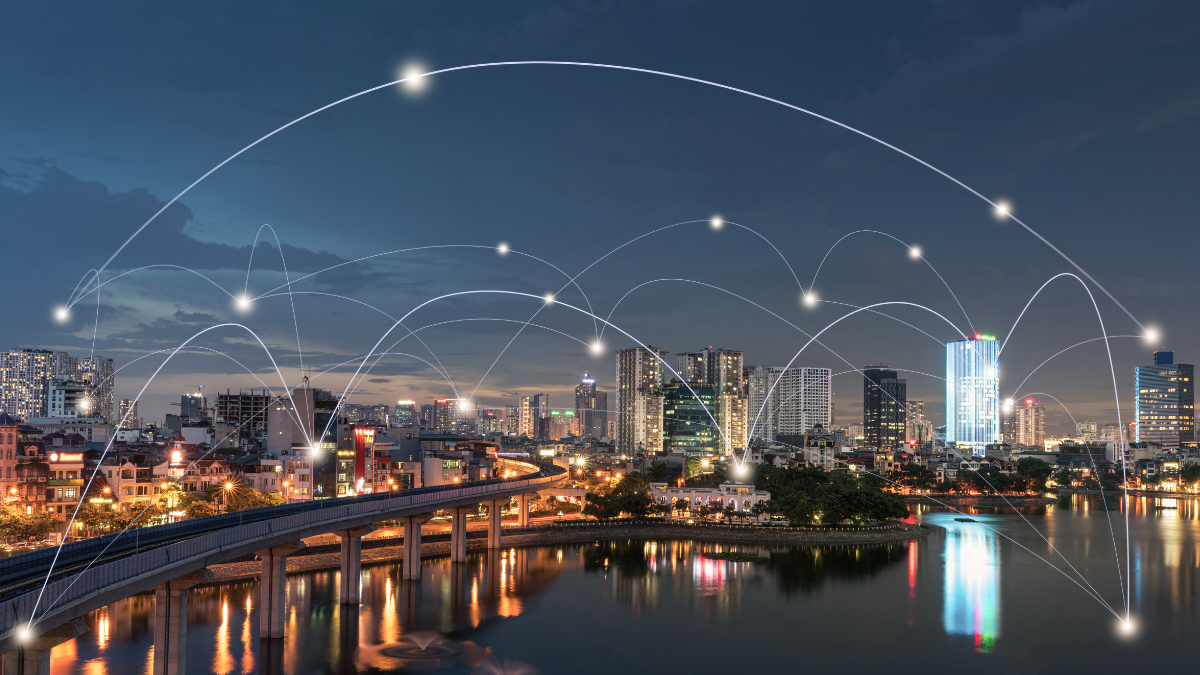AUTHORED BY CHAMITH VIRANGA – BUSINESS DEVELOPMENT MANAGER, CONSTRUCTION & HOSPITALITY AT N-ABLE
Smart buildings are transforming the way we live and work. These buildings, equipped with advanced technology, are known for smart space solutions and are constructed by forward-thinking builders. Many smart building companies are leading the way in providing easy-to-use smart building systems. As Sri Lanka embraces these innovations, the future promises more sustainable and connected living spaces. In this article, Chamith Viranga – Business Development Manager, Construction & Hospitality at N-able – shares his thoughts on smart buildings in Sri Lanka and their impact on the future of construction.
The only constant in the current world is that things move fast, especially in tech and construction. It is no longer necessary to use traditional building methods. Instead, builders are focusing on boosting sustainability and citizen satisfaction. The future of the built environment is smart. Not implementing technology for technology’s sake, but the result of a conversation amongst tenants, owners and technologists focused on the outcomes that the users of buildings want.
As a nation, Sri Lanka is at the initial stage of its smart building journey. There are three significant breakthroughs involved in the evolution process if we are to harness the full potential and benefits of smart building technology:
1) The Introduction of Open Protocols
Protocols are best understood as the "languages" by which objects communicate with each other. Technically, they enable communication between servers within a network. The early BMS consisted of multiple subsystems that were not interconnected. That’s because those systems didn’t "speak" the same language. Building operators or managers had to collect and aggregate data from different systems in a single building or across multiple buildings to make sense of it. Part of the problems with the early BMS were fixed when communication protocols for buildings were set up.
2) The Transition to Wireless
Traditional hardwired circuits have problems, especially when it comes to infrastructure. Wireless communication protocols get around these problems. Wired devices are notoriously inflexible: they tether building owners and managers to legacy systems outfitted with antiquated technology. The adoption of wireless devices significantly enhances system reconfigurability. It is especially effective in buildings where space use and configurations are variable.
3) The Impending Ubiquity of the Internet of Things (IoT)
IoT refers to a hyperconnected network of "things" that can gather and communicate data using an internet protocol (IP)—it's the machines talking to other devices and talking to the user. In the building world, IoT can be defined as several data points in a single building which transfer information between themselves and the cloud, via the internet. Analytical tools and applications use this data to make information that can be used to improve how well a building works. Users and facility staff can access, share and control data remotely.

The most innovative building solutions are based on IoT capabilities and data utilization. To find patterns in raw building data, you need better analytics and other tools that can handle and make sense of the tremendous amount of information that has been collected, so the most advanced analytics software features sophisticated fault detection and diagnostics, mobile-first interfaces, and machine learning (ML) algorithms that allow for continuously improved automation.
To optimize project success, intelligent building solutions providers must meet the following criteria:
Expertise: The provider's capabilities are critical when considering any intelligent building solution. Look at their history of working with IoT and associated technology, their service platforms, and their analytics applications.
Integration: Partner with a company that seeks to work with existing infrastructure and devices as much as possible rather than replacing them. Your solution providers should also understand when there are better options than integration.
Scalability: It is often better and less risky to start small and grow a system than to use expensive proprietary solutions that require long-term commitments or offer more than what a building needs at installation.
Compatibility: As a rule, open-source platforms allow new capabilities to be more easily added as needed. Choosing a provider who can work within an open framework gives you greater flexibility.
How Can Our Solutions Help?
N-able is a reputable service provider that meets all four of the criteria mentioned above, by offering a diverse range of technology solutions such as smart buildings, Extra Low Voltage (ELV) and IOT.
With over 14 years of specialization in smart building and IOT systems integration, N-able boasts successful project delivery in this solution scope and is backed by a highly skilled engineering team and support functions, that work across several engineering teams. We have successfully delivered large-scale projects on a national scale across the telecommunications, government, banking and finance and enterprise sectors across the Asian region.
N-able is a global partner for many of the biggest names in the IT and ELV technology space. These partnerships add value to the large-scale, integrated solutions we offer to N-able customers.
Click here to explore our solutions

